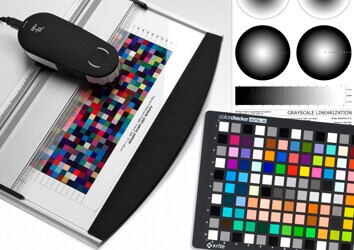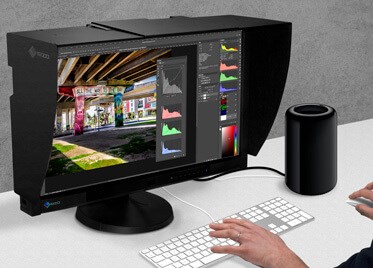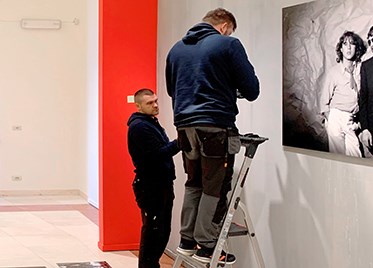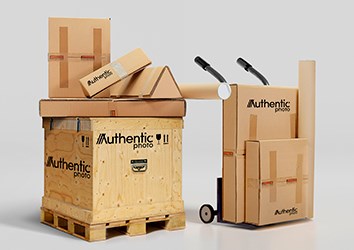Diasec is a Registered Patent that can only be used by official licensees.
With special bonding machines, Diasec is chemically processed with the image side against a transparent methacrylate plate (Plexiglas).
Diasec results in a particularly sharp image with more intense color saturation, without air bubbles. It does not yellow over time and does not discolor the image.
Diasec A La Carte works with lightfast photo papers with years of color retention (ISO 9706 up to more than 200 years).
The combination of Diasec with ISO 9706 images means that your photo work will increase in value as it ages.
AuthenticPhoto.com is an official Diasec licensee and processes Diasec with its own staff in its bonding department.
Diasec = Exclusive Licence
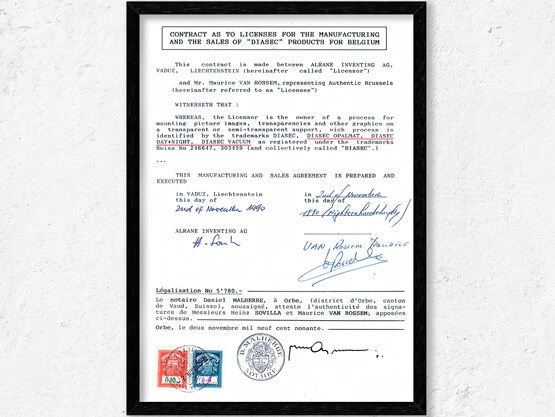
Only holders of a Diasec licence obtain the exclusive raw materials to produce Diasec.
AuthenticPhoto.com / Maurice Van Rossem have been official Diasec Licensees since 1990. (For Belgium and France)
Only the holders of an Official Diasec License obtain the exclusive raw materials to produce the real Diasec and use the special Diasec bonding machines. As a rule this is one per country. The list of official licensees can be found on the official Diasec Website.
AuthenticPhoto.com bonds its Diasec photos exclusively with original Diasec raw materials with the special Diasec Bonding Machines.
Diasec raw materials are resistant to UV light and do not yellow.Diasec raw materials ensure that no air bubbles and fine dust particles are present.
The special Diasec bonding machines ensure a sharp and colorful image.Diasec raw materials ensure that the image does not detach from the plexi.
Anyone can order Diasec products at AuthenticPhoto.com.
History of the Diasec invention
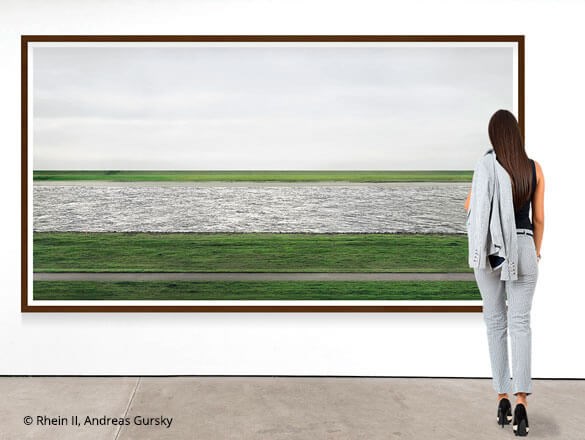
Diasec is celebrating its 50th anniversary, having been invented in 1969 by the Swiss, Heinz Sovilla-Brulhart.
Diasec was initially developed to be used with photographic products such as Cibachrome, Kodak and Fuji photographic paper.
It was then possible for the first time to protect these pure photo products with an invisible chemical adhesive and plexiglass. Later it became possible to use Diasec in combination with Fine Art products that comply with ISO 9706 (museum quality) and can be kept for more than 100 years.
For more than 50 years Diasec has been used by a long series of leading photo artists:
The Italian Photographer Massimo Vitali (1944) was one of the first supporters of Diasec.
The most expensive photo in the world is a Diasec mounted in a wooden frame: ‘Rhein II’ by Andreas Gursky (1955) which was auctioned in NY by Christies for $4,338,500. See image on the right.
Diasec proves to be the highest-quality photographic product
Advantages of Original Diasec Raw Materials

Due to its 50 years of existence, the original Diasec provides the actual proof of not dising or affecting the image quality.
Original Diasec Raw Materials with Diasec Bonding Machines:
- Do not dis and are resistant to UV light
- Diasec bonding is Invisible and without Air Bubbles and Dust
- Do not damage the image material
- Ensure that the photo does not come loose
- Preserve the saturations of the image
- Offer a pure image reproduction through less refraction of light. There is no air layer or double-sided adhesive film between the plexi and the image
Protects your photo from air pollution, mould, flies, etc.
Additional framing is not necessary but is an option.
Diasec is maintenance-free because of the protective Plexiglas.
Diasec leads the way in the photographic Art sector.
The difference in structure between a Real Diasec and a "Fake Diasec" with Double-sided Adhesive
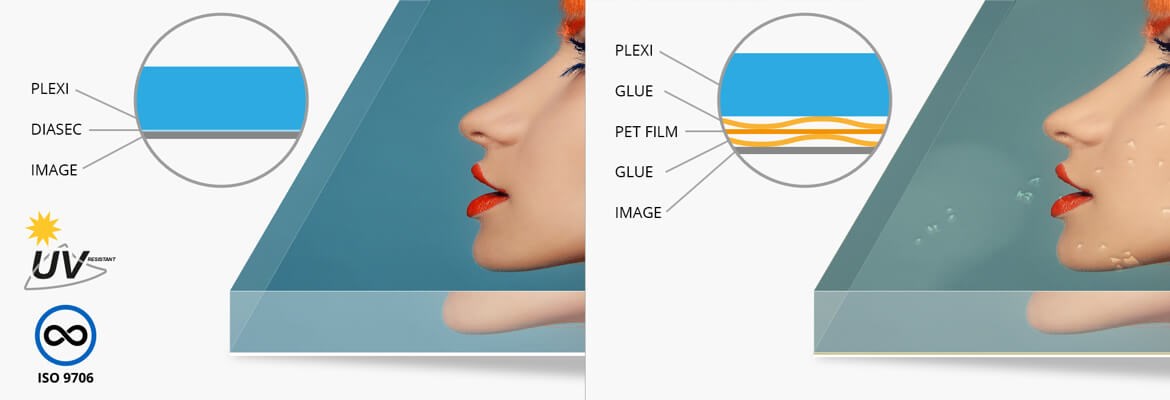
Real Diasec
A Genuine Diasec uses raw materials invented by Heinz Sovilla, which can only be bought and used by official Diasec Licensees. As with Coca Cola, there are few people who know the composition of these raw materials.
The result is that the image is equated with the plexi by a chemical reaction. Diasec is UV-resistant and does not yellow. The Diasec layer is super-thin, does not break the light, is free of dust and air bubbles. The Diasec bonding method strengthens the colours and image contrast, resulting in a clear image.
A real Diasec from AuthenticPhoto.com also contains a Plexi or Dibond backing together with a hanging system in aluminium. Or is framed in an Aluminium or Wooden Floater Frame
Fake Diasec with double-sided adhesive
This version of a "Fake Diasec" uses a so-called transparent double-sided adhesive.
This adhesive consists of 3 parts: a PET layer in the middle with an adhesive layer on both sides. With this 3-part film, the image is bonded to the plexi. This adhesive is seldom free of dust and air bubbles. There is a risk of dust and air bubbles forming along the two sides of the PET film during the bonding process.
Air bubbles also arise out of nowhere because the expansion factor of the adhesive and the PET layer are different. Because of the 3-part film, the refraction of light is very high and the colors and image contrast flatten out, resulting in a poor image.
After a few months, the PET film and the adhesive layers begin to yellow.
Manufacturers of such adhesives give no guarantee that their product will last more than 2-3 years.
These ‘False Diasecs’ are of substandard quality, have no artistic value and do not have a long shelf life.
Fake Diasec by means of Direct Printing of Plexi with UV inks.
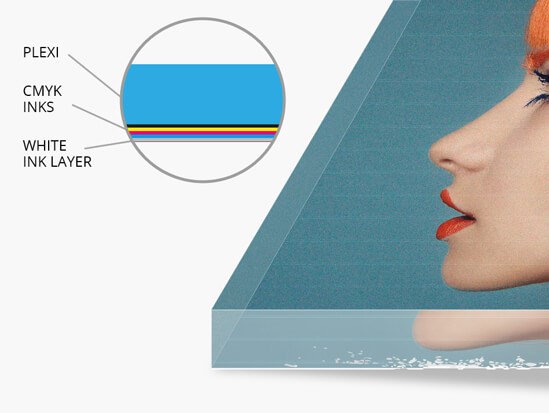
Another "False Diasec" is produced by printing directly with UV inks on the back of a plexi. The image is printed in mirrorwise on the back of a plexi and another back layer is added in opaque white ink because the inks themselves are transparent.
A UV ink is immediately dried (cured) with UV light during printing.
Most UV printers work with poorly adjusted or too old UV Lamps, which causes the inks on a plexi not to cure sufficiently and then come loose. Especially at the edges.
At the back of the white backing a Dibond or a Plexi is sometimes glued to make it look like a real Diasec. This will inexorably come loose over time because the white UV ink repels the glue layer. A UV image is printed from side to side in smaller strips of a few mm or cm.
Due to the overlap of the small strips, there are print lines in the image.
UV printing machines are usually located in an industrial production environment where the quality of the prints has no artistic importance. In any case, UV printing machines have a lower print quality than the image productions at AuthenticPhoto.com.
False Diasecs created with UV prints remain of a substandard quality and do not have a long shelf life.






